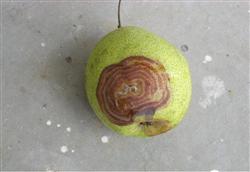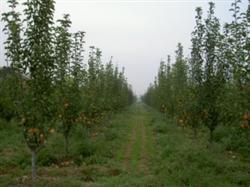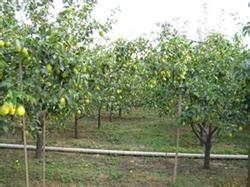Small measures for Prevention and Control of Pear pests

Big heart eater. There are 2-3 generations a year, and there is a habit of turning buds and fruits. At this time, the pear heart borer is in the dead flower, and when the young fruit develops to the size of the thumb, it is transferred to harm the young fruit, and one larva can harm 1-4 young fruit. therefore, it is necessary to use 40% good labor and other internal absorption insecticides to control. Pear heart borer. Also known as oriental fruit moth, peach heart worm. There are 4-5 generations a year. Peaches and plums planted around pear trees are generally harmful to peaches and plums, mainly to tender shoots, so it is necessary to cut off the damaged shoots. Pear stem wasp. Also known as folded tip worm, haircut worm. There is one generation a year, when the adult begins to lay eggs. When the new tip is 10-15 cm long, the sawed tip lays eggs at 6-7 cm, so it is necessary to spray to control the adult, and cut off the injured tip and cut off 3-4 cm under the saw. Pear wasp. One generation a year occurs, mainly within one month from flowering to young fruit, when the larvae are generally in the calyx, which can be controlled by spraying internal absorption agents, which can be controlled by 40% good labor plus 2.5% pyrethrin.
- Prev

Management techniques of Pear trees in early Spring
1. Dig a fixed planting hole or planting ditch. The planting hole can be dug in the pear orchard where the plant distance of ① color tree species is more than 3 meters. The planting hole can be dug into a round or square planting pit with a depth of 1 meter and a width of 1 meter, and the topsoil and core soil can be placed on both sides of the hole. ② plant distance below 2 meters in the pear orchard, to dig a fixed planting ditch, ditch depth of 1 meter,.
- Next

Fertilization Management techniques for High-yielding Pear trees
About a month before the pear fruit ripens, the growth rate accelerates, which is called the fruit expansion period. At this time, topdressing can improve photosynthetic efficiency and promote nutrient accumulation, which is beneficial to fruit expansion and flower bud differentiation. This topdressing will not only increase the yield of the current year, but also lay the foundation for the results of the coming year. 525 Shandong Fruit Network fertilization period is generally in the fruit.
Related
- Moge, come on! The staff of the peasant association in the producing area of cantaloupe were frightened when the crowd gathered.
- Causes and Solutions of low Fruit setting rate of Apple
- Symptoms and control measures of passion fruit virus disease
- Fruit growing lesson: how do apple orchards keep high yields?
- Can you build orchards in the mountains? What are the pros and cons?
- How to manage the coloring period of Crisson grape?
- This paper introduces the processing technology of two kinds of fig products.
- How much is a month for retired teachers in rural areas by 2020?
- How can strawberry planting increase sugar content? We should pay attention to management in many aspects.
- What are the cultivation techniques on how to improve the yield of golden fruit?

